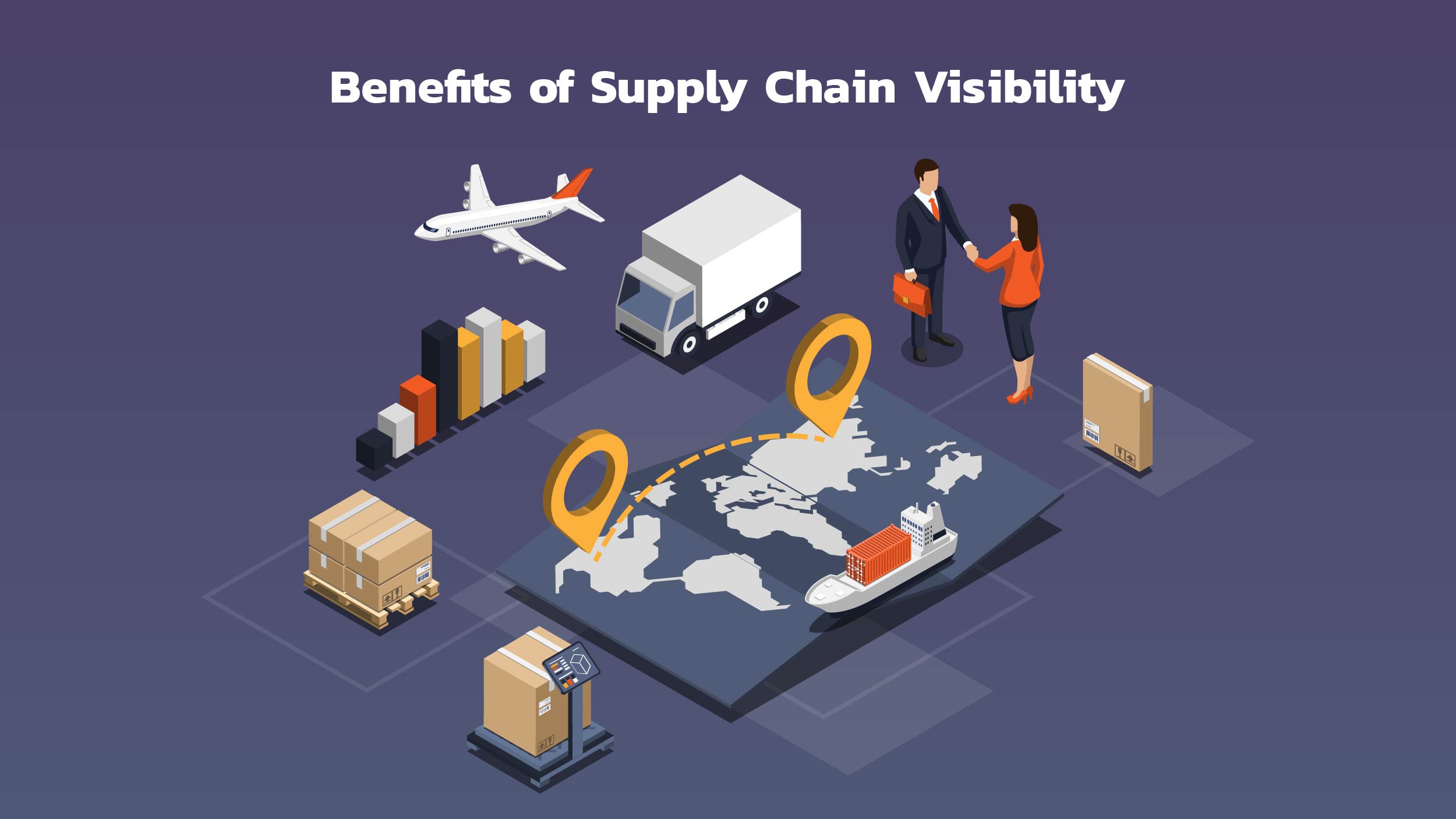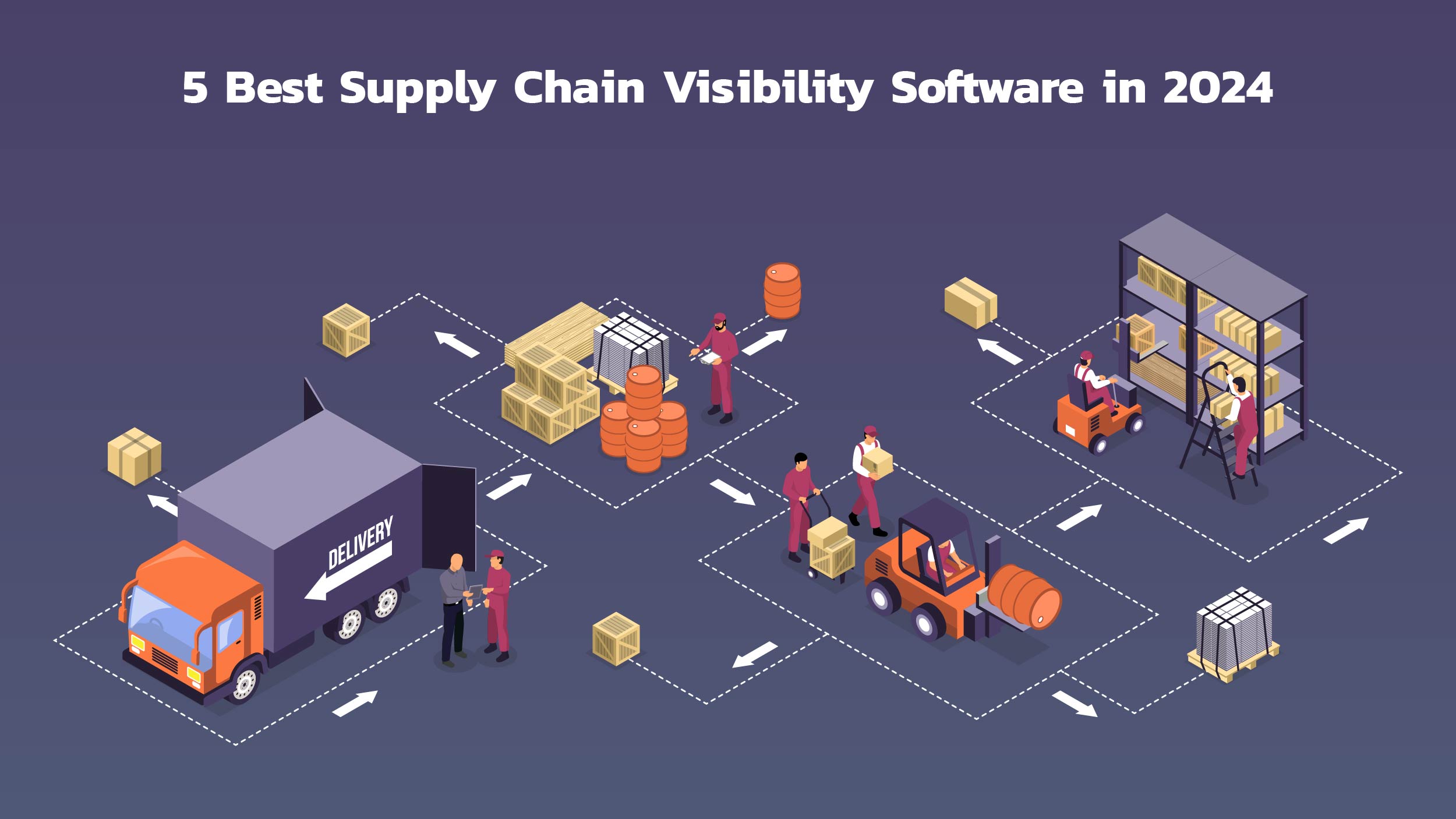Supply chain visibility (SCV), alternatively referred to as real-time transportation visibility or simply real-time visibility, is anticipated to emerge as a profoundly transformative and disruptive technology within the global supply chain landscape in the coming years.
Despite its existence in various forms for several decades, the latest iterations of visibility tools are now reaching a level of maturity. Consequently, these new tools are gaining significant attention among industry leaders.
Whether you’re unfamiliar with SCV or actively seeking methods to integrate it across your organization, this page serves as a comprehensive guide to everything you need to understand about this rapidly evolving software category.
Let’s get started!
What is Supply Chain Visibility?
Supply chain visibility (SCV) refers to the ease with which businesses or customers can monitor the progress of their online orders, specifically products or parts. When this data is readily available and easily accessible, it allows all parties involved to understand the expected delivery date or when the product will be available for purchase. Ultimately, this enhances the overall customer experience from start to finish.
Benefits of Supply Chain Visibility

Achieving comprehensive visibility throughout the supply chain offers a distinct edge, as it enables businesses to provide superior customer service. According to the 2022 Supply Chain Survey conducted by IDC, 80% of participants reported ongoing initiatives aimed at enhancing SCV.
Also Read : What is Virtual Production and Why Does it Matter in 2024?
Some of the major benefits offered by SCV include:
- Enhanced inventory management
- Elevated customer experience and satisfaction levels
- Decreased cycle times
- Enhanced worker efficiency and productivity
- Time saved through automated tracking across all transportation entities
- Decreased costs linked to delays and chargebacks
- Access to more accurate data for informed business decision-making
5 Best Supply Chain Visibility Software in 2024

Here are some of the well-known supply chain visibility solutions you can consider in 2024.
1. Oracle SCM Cloud
Oracle SCM Cloud offers comprehensive capabilities encompassing distribution, manufacturing, inventory, fleet management, supply chain planning, logistics, and order management. Additionally, it provides digital support through intelligent applications tailored for IoT and blockchain integration.
This supply chain visibility tool is well-suited for small and medium-sized enterprises across diverse sectors such as automotive, communications, healthcare, high technology, industrial manufacturing, and retail/consumer goods.
2. SAP Integrated Business Planning (IBP)
SAP Integrated Business Planning provides a range of features, including the monitoring of supply chains, sales and operation planning, management of forecasts and demands, optimization of inventory, planning for responses and supplies, and implementing demand-driven replenishment.
The integration model between S/4HANA and SAP IBP facilitates the implementation of standardized integration logic that determines the specific transactional, master, and configuration data that should be gathered and transferred to IBP. Additionally, SAP IBP can be seamlessly connected with the SAP Supply Chain Control Tower to enhance visibility and enable proactive corrective measures.
3. Infor Nexus
Infor Nexus is a cloud-based supply chain visibility software offering end-to-end orchestration for enterprises across various industries. It utilizes IoT, AI, and advanced visualization to provide predictive intelligence and real-time visibility through a collaborative network. This mobile-friendly platform supports features such as end-to-end visibility, multi-enterprise networking, onboarding, and integration.
4. RapidResponse
Kinaxis RapidResponse is a cloud-based platform tailored for large enterprises, offering sales, operational, capacity, demand, inventory, and supply planning, alongside machine learning capabilities. With real-time supply chain visibility and seamless online collaboration, it serves industries including aerospace and defense, automotive, high-tech and electronics, industrial, life sciences, and consumer products.
5. Blue Yonder
Blue Yonder, a cloud-based supply chain management platform, enables digital transformation with machine learning, AI, IoT, and SaaS. The solution caters to industries such as retail (both hardlines and soft lines), process manufacturing, discrete manufacturing, grocery and pharmacy, restaurants and food service, third-party logistics, as well as wholesale and distribution.
4 Tips to Boost Supply Chain Visibility
Establishing visibility in supply chain is crucial for achieving success in a dynamic and evolving environment. However, due to the intricate nature of modern global supply chains, it may seem challenging to establish this visibility. To help you get started, consider following these four steps that will guide you in the right direction.
1. Understand your gaps
Start by assessing the most significant deficiencies in your supply chain and devising strategies to rectify them. Determine the areas that would benefit the most from enhanced visibility and identify the challenges that this would address. By prioritizing these areas, you can implement a systematic approach to improving SCV and achieve early success.
2. Focus on your data
To ensure efficient management of the supply chain, it is crucial to collect, evaluate, and distribute the extensive quantity of operational data that is accessible. It is important to possess reliable data throughout your network and organization, the necessary technological tools to extract valuable insights from the data, and a platform that facilitates data sharing among your customers and partners.
3. Boost collaboration across your supply chain
Supply chain visibility and collaboration are closely interconnected. In a supply chain network, which encompasses suppliers, manufacturers, distributors, and retailers, all stakeholders must have the capability to effortlessly exchange information that affects the movement of products and their financial results. This comprises factors such as delays in production, shortages in inventory, surges in demand, and compliance matters. Modern cloud-based supply chain management (SCM) systems have been designed to facilitate such collaborative efforts.
4. Get closer to your suppliers:
In order for collaboration to be effective, it is essential to establish effective communication. It is crucial for your supply chain partners to feel motivated to share critical information with you, both through technology systems and other channels. Regular and diverse communication methods, such as phone calls and meetings, should be utilized to ensure that your perspectives and objectives are in alignment and to address any concerns directly.
Bottom Line
Ensuring complete visibility is of utmost importance for both the business and customers in order to deliver a satisfactory ordering experience.
Supply chain visibility solutions comprise various elements that collectively contribute significantly to the transparency and comprehension of order status.
To enhance their future business decisions, companies should carefully examine various factors such as order specifics, physical component whereabouts, inventory, expenses, and other relevant information. Additionally, customers can take advantage of this transparent data to stay informed about the real-time progress of their packages.
Enhancing SCV increases the likelihood of building stronger relationships with suppliers and customers, making it beneficial for businesses.




